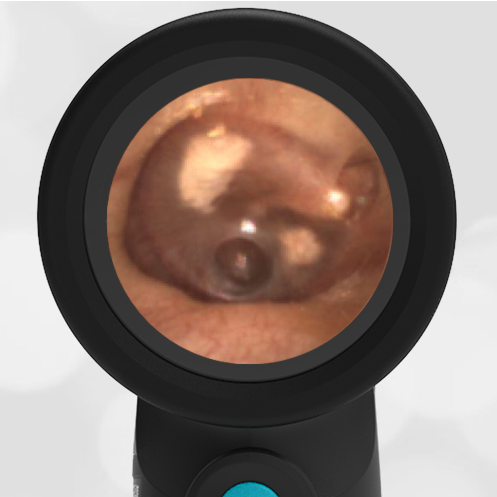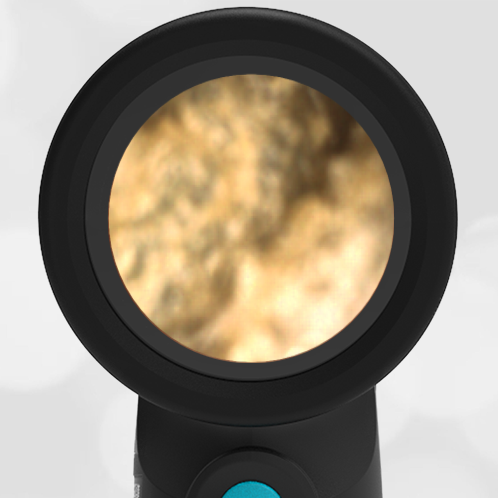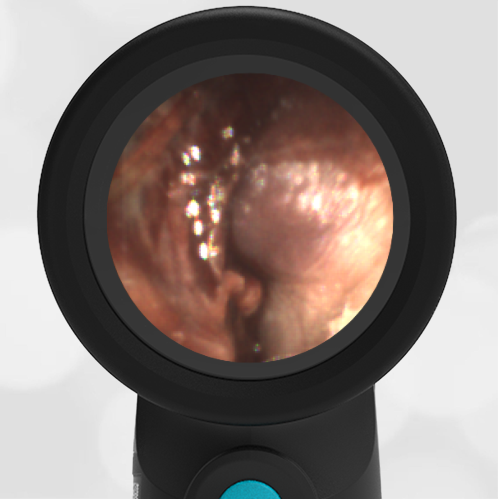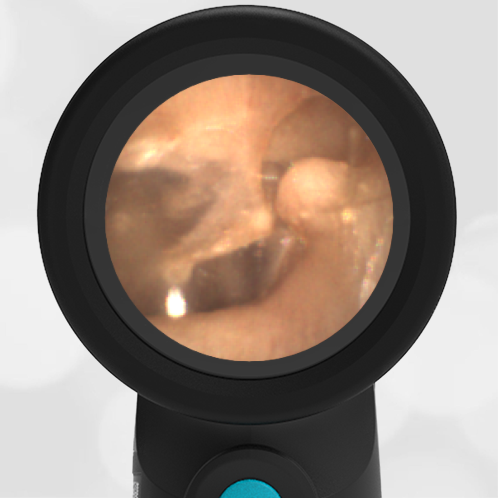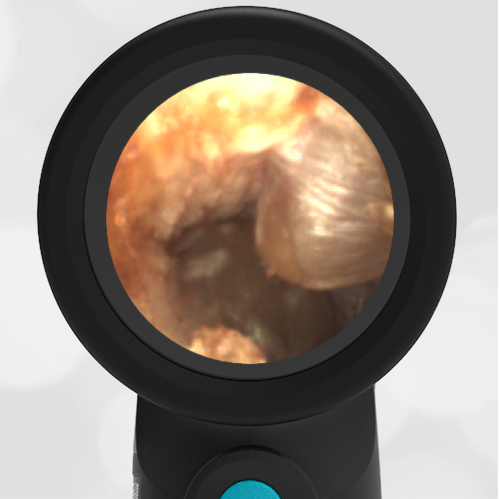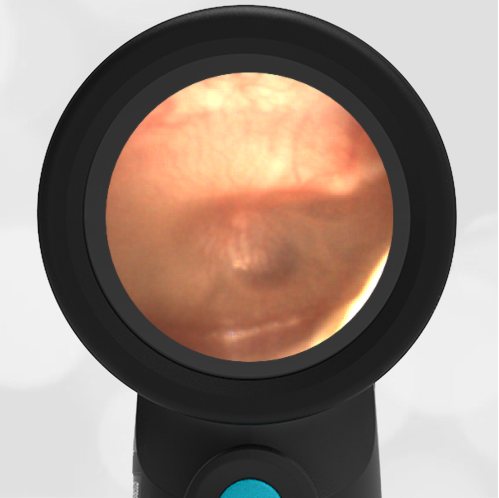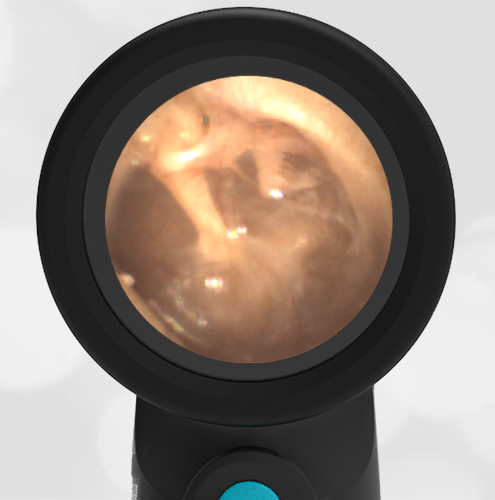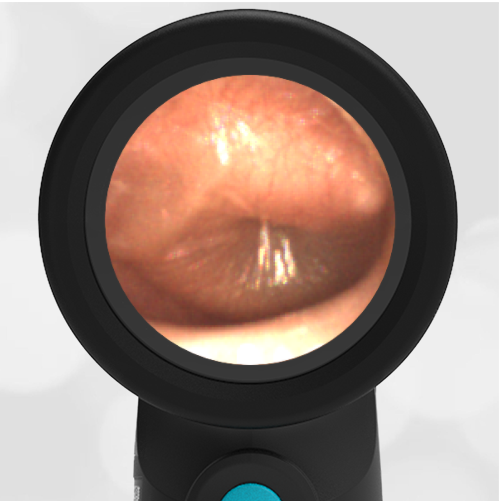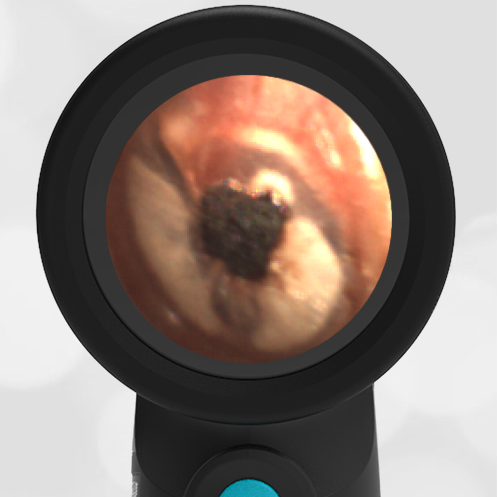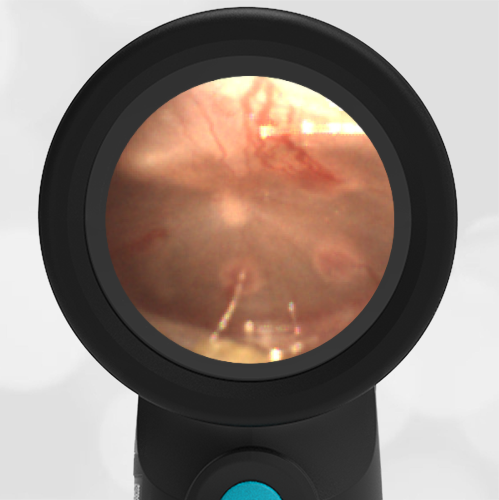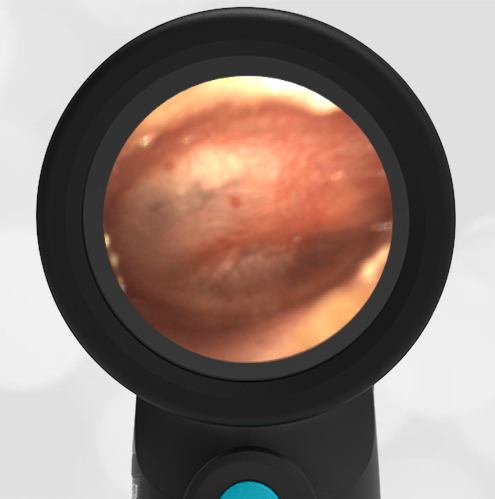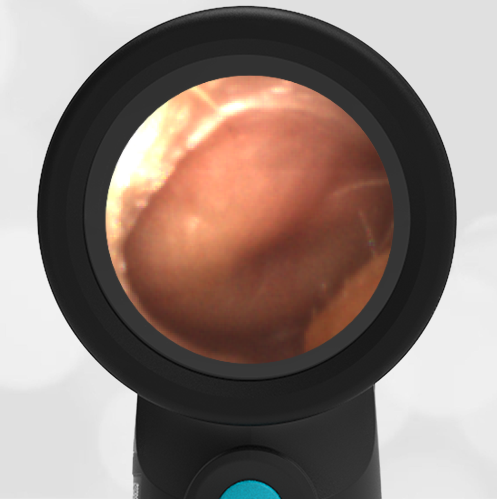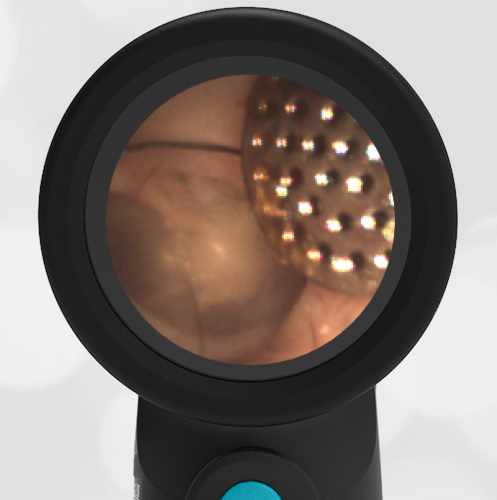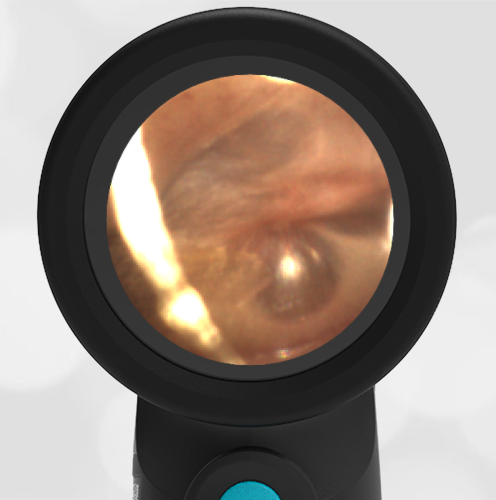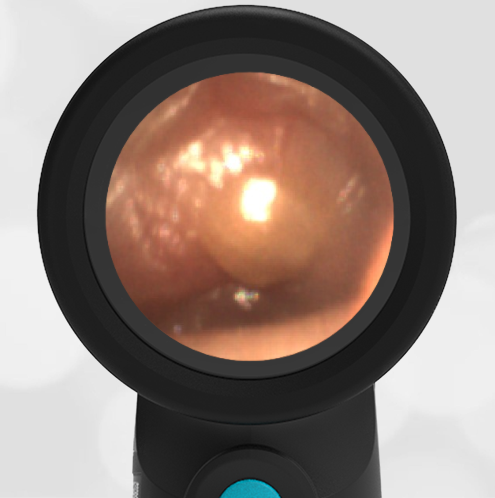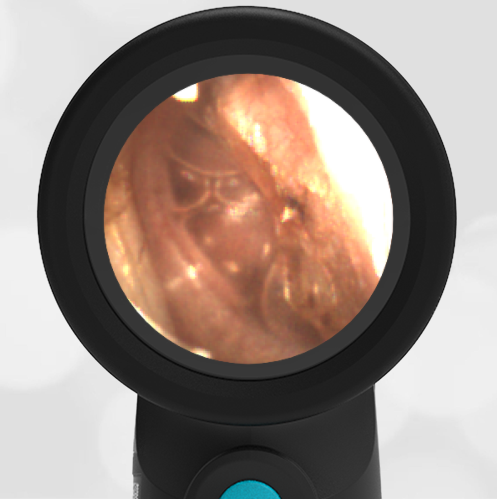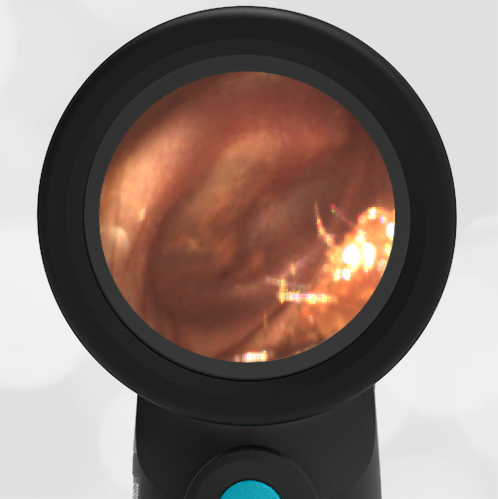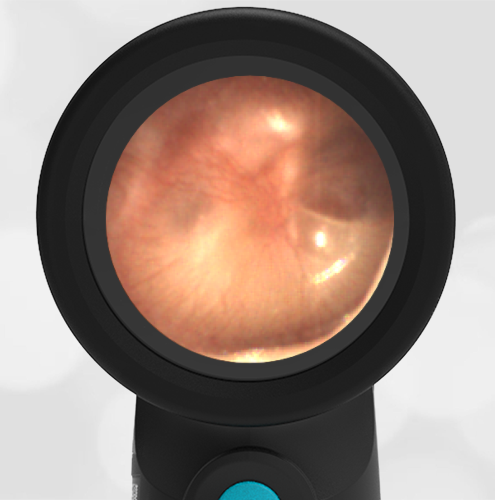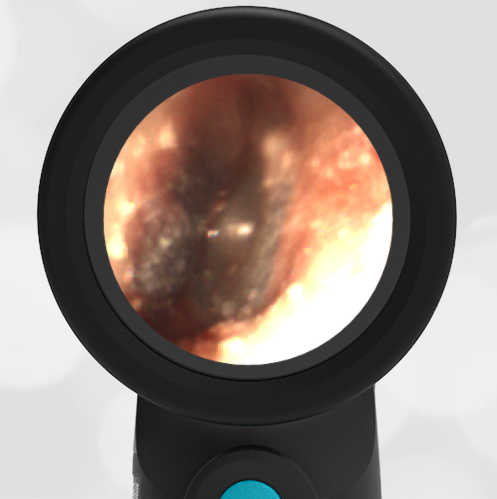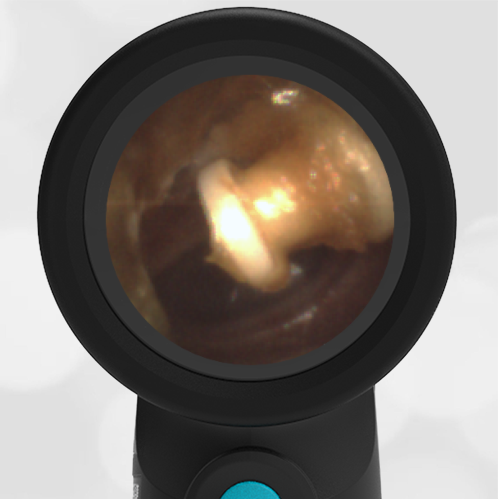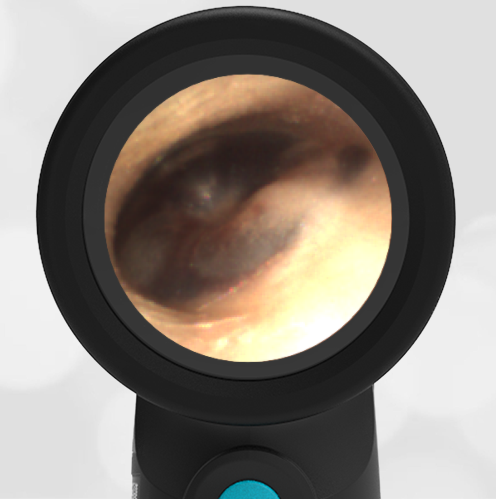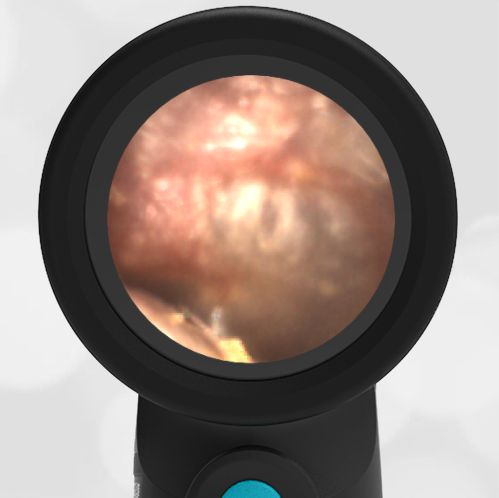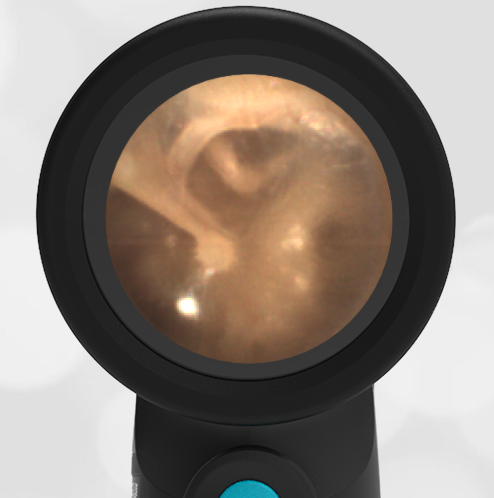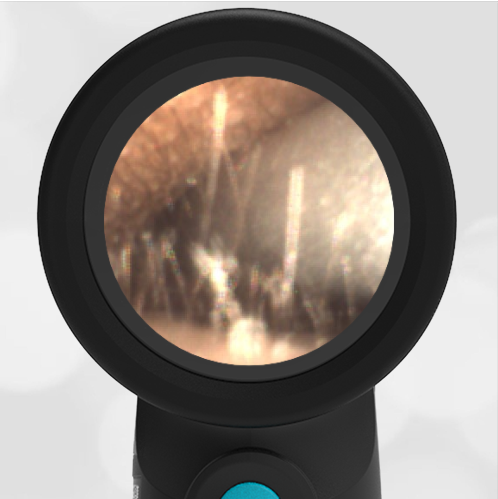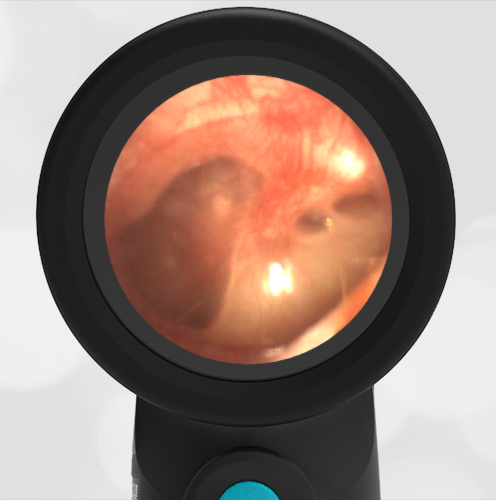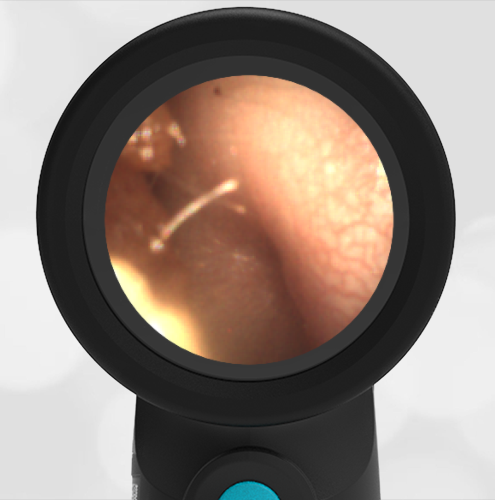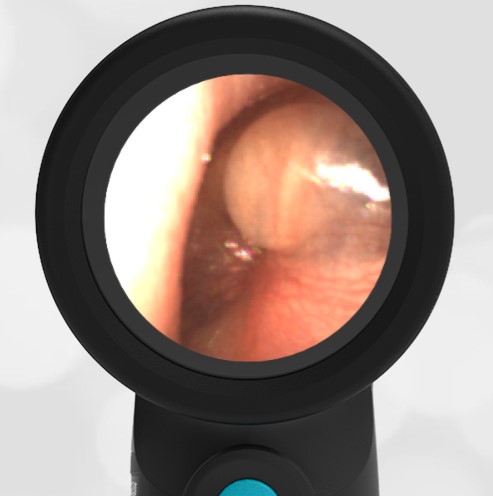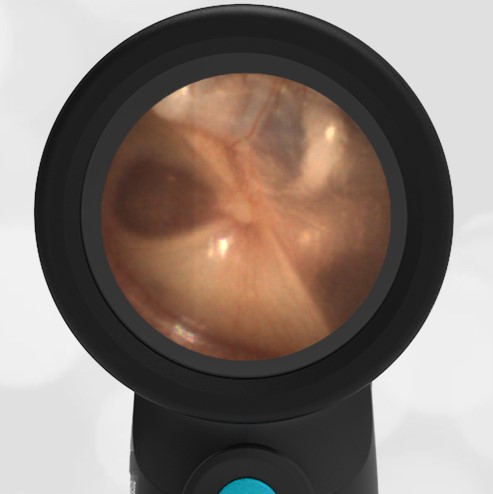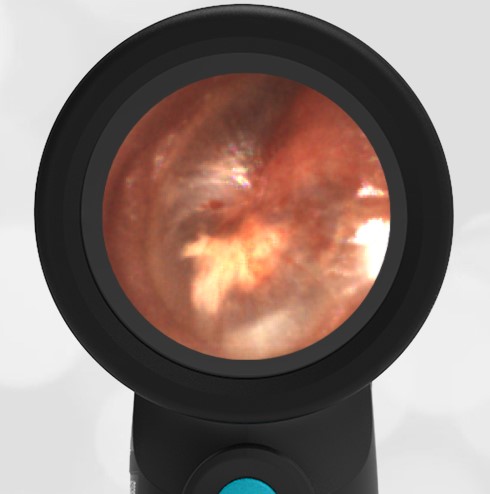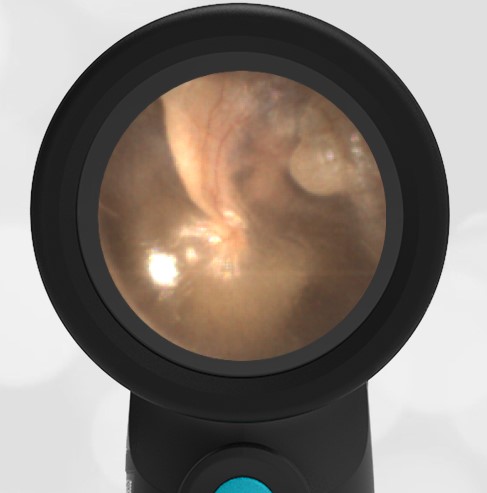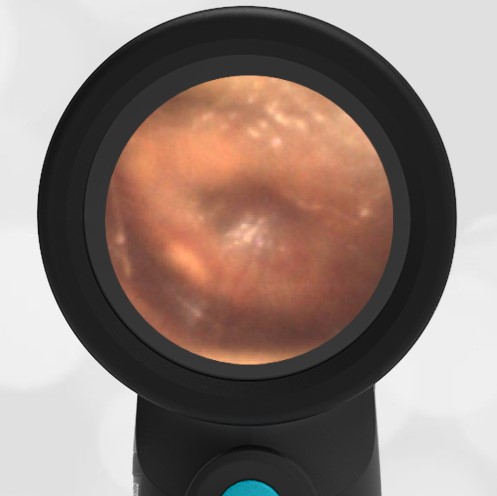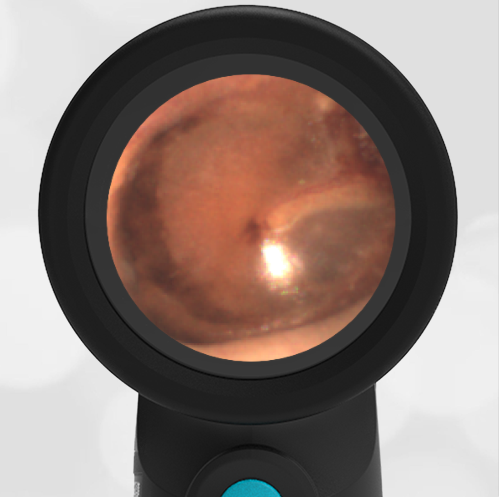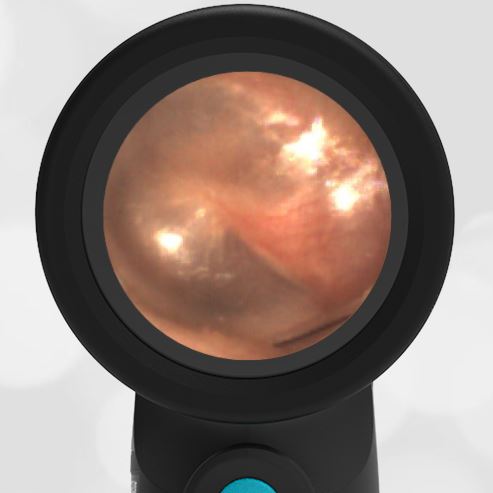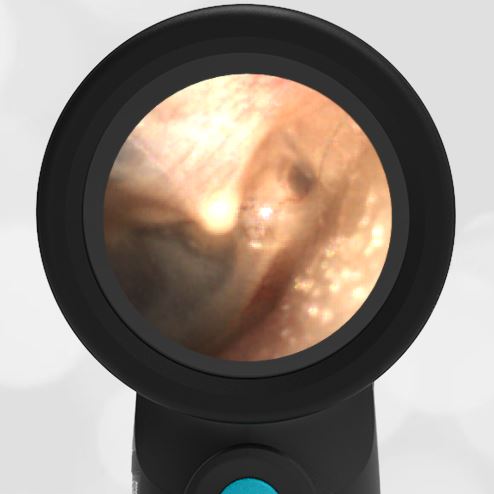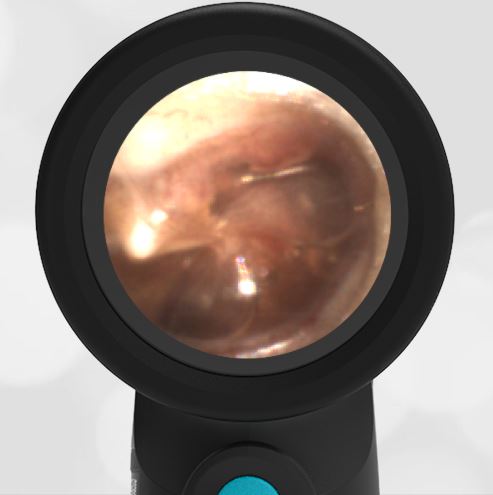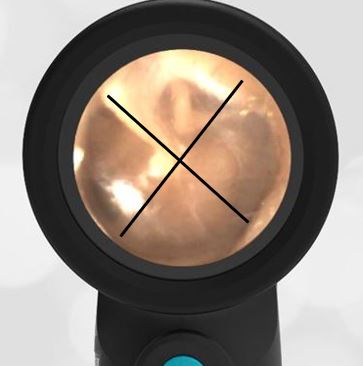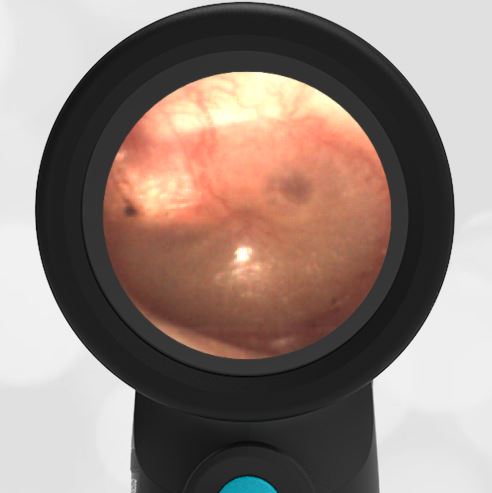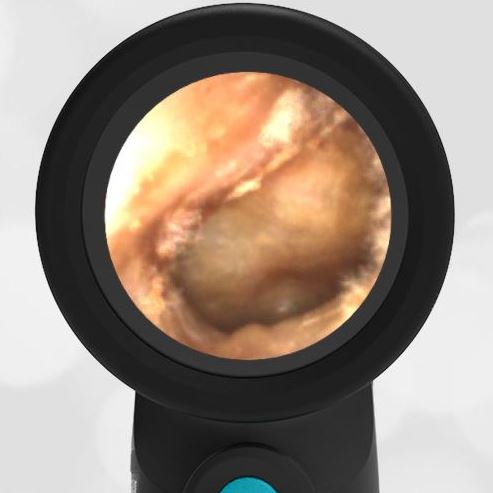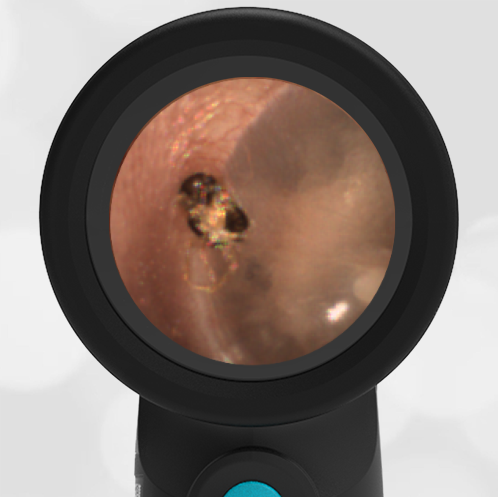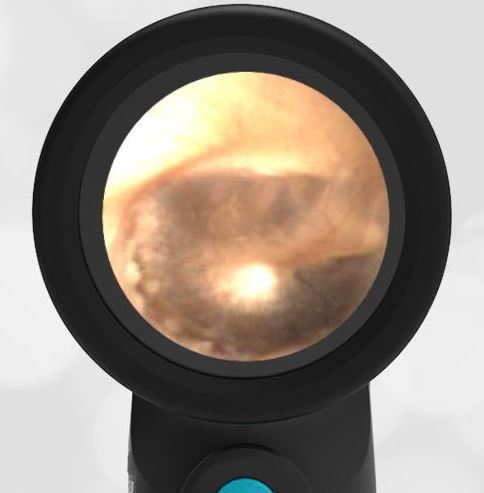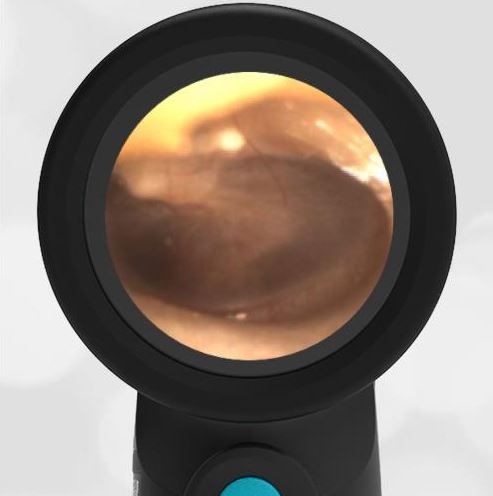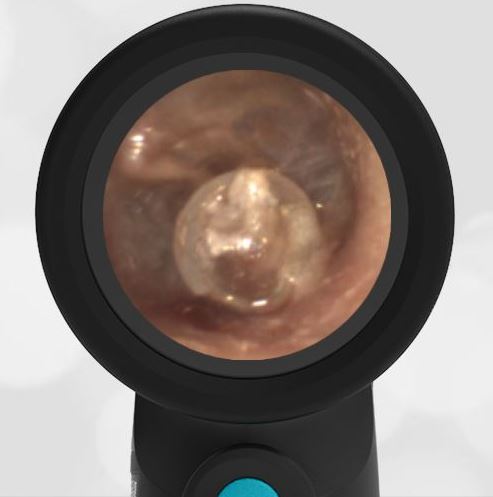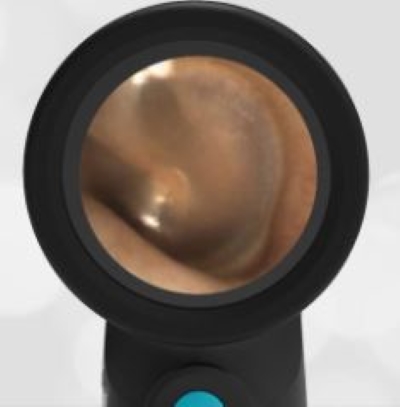
Epistaxis – June 13, 2024
A 16-year-old male presented evaluation for epistaxis (bloody nose). He states he has had at least five episodes in the past two weeks and mom is concerned he has “lost too much blood.” That evening, the bleeding would not stop despite applying pressure, so he was brought to the pediatric emergency department (ED). He has a heart rate of 75 and is well-appearing without paleness, petechia, or bruising. His WiscMed Wispr anterior rhinoscopic exam is provided below.
Which of the following is true of this patient’s epistaxis?
- The source of the bleeding is likely from the anterior nasal passage
- Dry air may predispose to recurrent episodes
- Bleeding disorders or low platelets are the most common cause
- All of the above
- A and B only
Answer: E. A and B only
This adolescent’s epistaxis is a result of dilated blood vessels located on the anterior inferior nasal septum (see Wispr image). As the most common site of epistaxis in children, this area of the septum is also known as Little’s Area or Kiesselbach’s plexus.
- Initial Exam
- Post Cauterization
Epistaxis is a common pediatric complaint with approximately 250,000 visits annually in the U.S. The mean age is 8 years old and more than 50% of children over 5 years have had at least one episode. Most cases can be traced to dilated vasculature in Kiesselbach’s plexus which are often visible on physical exam. The overlying nasal mucosa is quite thin and susceptible to irritation from dry air, irritants, and digital trauma (i.e. nose picking), leading to episodes that, while occasionally frequent, rarely lead to anemia or life-threatening blood loss in an otherwise healthy child. Indications for additional evaluation include the very young child (epistaxis is rare in children less than 2 years) or if there is a history of excessive bleeding (ex. with circumcision or menarche), paleness, petechia, or bruising.
Management of the anterior nosebleed is dependent on the number and severity of episodes as well as the presence of visibly dilated vessels. Stopping the bleeding is typically accomplished with direct pressure (no “peaking” for at least 20 minutes) augmented with Oxymetazoline (Afrin, or similar vasoconstrictor) soaked cotton ball. Once bleeding is controlled, direct visualization of the offending vessels may be accomplished with a good light source, aided by anterior rhinoscopy. When episodes are recurrent, and the dilated vessels are apparent, chemical cautery with silver nitrate is a quick and effective procedure to reduce recurrence (see referenced link for a video of the procedure). This intervention was elected by the patient with satisfactory results (see image 2). He was discharged with recommendations to protect the mucosa with a non-irritating emollient such as Vaseline as well as ENT follow-up if rebleeding occurs.
References:
Tabassom A, Dahlstrom JJ. Epistaxis. [Updated 2022 Sep 12]. In: StatPearls [Internet]. Treasure Island (FL): StatPearls Publishing; 2024 Jan-. Available from: https://www.ncbi.nlm.nih.gov/books/NBK435997/
https://www.youtube.com/watch?v=F1v4wtf-i2U
Here are the complete video exams
Initial Examination Video
Post Cauterization Video








